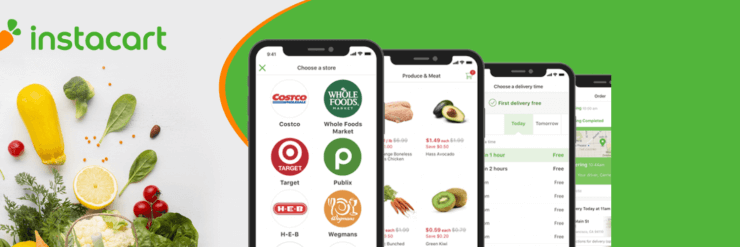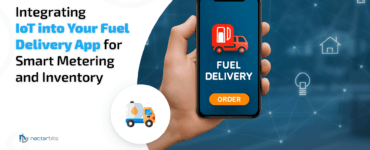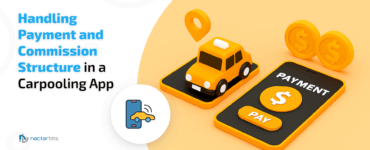The on-demand grocery app solution has gained huge momentum in the last few years. The hockey-stick growth is seen in mobile grocery shopping with increasing mobile penetration across the globe. The mobile app solution for grocery flame was already lit with heightened user’s instant gratification needs, but COVID-19 has poured diesel on the fire and the grocery sales and revenue have made new records. The profound impact is seen worldwide.

- The grocery delivery landscape in the US is worth around $20-$25 billion with Walmart grocery, Kroger, Shipt, Instacart, and Stater Bros-like grocery ios apps experienced a surge in sales by manifolds.
- The UK is projected to become the second-largest grocery market after China by 2020. With Corona’s impact, the grocery delivery service providers- Ocado, Asda, Tesco, and Sainsbury are all set to touch new heights.
- Canada is an emerging market for grocery industry where Canadians spend around $6.4 billion per year on the groceries shopping. Toronto, Fresh City Farms, and other Canadian grocers are witnessing the business growth by manifolds.
The impressive facts have cleared up one thing, that’s the online grocery shopping habit formed and intensified due to the corona pandemic is expected to become even stickier. It concludes- the on-demand grocery Android app is a globally trending business idea where the biggest brands and start-ups are capitalizing well.
If you want to digitally extend the brick-and-mortar grocery store with the Ecommerce grocery platform or want to build a grocery app solution in 2020, then you should understand how your grocery business idea gets fits with different business models and what the revenue models of the online grocery business are.
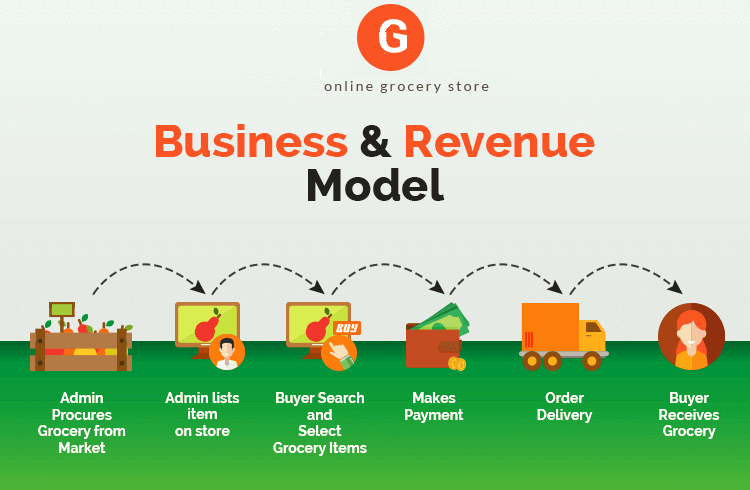
Let’s dive in!
The Business Model
Inventory model: The products are sourced from different suppliers and then delivered to the customers when the order is placed for the same.
Multi-vendor marketplace model: The platform connects the vendors and customers where the items are delivered via an in-house delivery network.
Shopping model: The platform works like a multi-vendor marketplace model, but doesn’t allow its customers to choose the vendor while placing the order. The platform transfers the item details to purchase from shop to the delivery personnel and then they shop the item and deliver it to the customers. Instacart, Big basket, and Ship are the good instances of it.
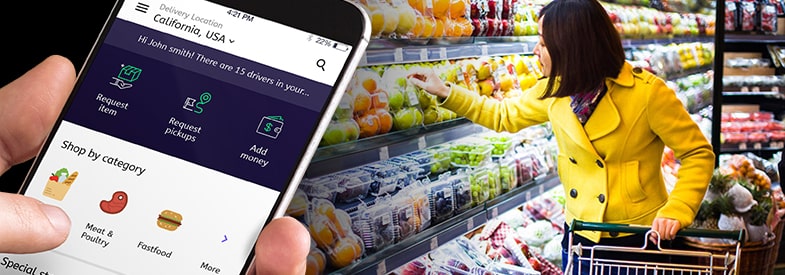
How Can You Make Money Using Any Of The Business Revenu Models?
There are myriad of the revenue channels that help online grocery ordering and delivery app solutions make money. The combination of the channels can be embraced to keep the business profitable. They are:
- Commission
The platform acts as a middleman that charges a fee (Commission) against every transaction which takes place on the platform. Different types of commission rates can be implemented on various products and categories, and when the seller’s products are sold, the platform will receive the commission in return.
The most popular and trending products can be identified and the commission rates can be changed accordingly. Also, the variation in commission is seen due to the difference in geographic locations.

- Membership
The membership model is also getting popular where the users opting for membership model against some fees will get value-added benefits such as free delivery, priority delivery, delivery schedule selection, extra discounts, and others. The membership plan is either sold by the platform or allowed the vendors to sell them.
- Subscription
The model facilitates the users to subscribe to certain products that are required regularly. For instance, the users can buy the weekly, monthly, or yearly subscription model for getting the recurring products such as milk, vegetables, grains, and cleaning supplies delivered at the doorstep after the regular intervals. Not just the scheduled deliveries, but the waived off charges and other privileges are the add-ons.
- Service charges
Under the multi-vendor grocery store model, the vendors who haven’t subscribed to the membership plan can be asked to pay for the service charges to put a sale on the products. It brings revenue to the platform and fosters the vendors to buy the membership plan.
Read more : Best E Commerce Business Models in 2020
- Promotions
For the online marketplace, the vendors can be allowed to boost product visibility by placing banner ads on the home page or paying additional money. The leading marketplaces such as Target, Walmart, and Amazon fairly monetize with ads and the sponsored content.
- Merchandising
Once the complex product or branded products get enough fame, then useful merchandise such as shopping bags, bottles, jars, or kitchen tools are displayed at the most viewed position to influence the customer’s purchase intent and accomplish the sales goal. This is also an old-school technique of physical stores that are transformed into digital.
- Hosting banner ads
When the E commerce mobile app for grocery platform is gaining enough traction with good traffic, then the platform can make the money online of it. By selling some space for banner ads, the click-per-impression or click-per-action based revenue models can be employed to make decent money. Beware! Don’t overdo because the bombardment of ads will ruin the user experience, which in turn, negatively hurt the platform sales and ROI.

- Sponsored listing
It’s a digital equivalent of the optimal shelf positioning where the vendors or stores pay for the products to prominently place on the top of the category pages or in response to search queries. However, the sponsored products interfere with the UX as the users find it difficult to search that they are looking for.
- Selling user’s data
The user’s data is the biggest asset that the grocery stores have and can be turned into a great source of revenue, which is when sold for the entrepreneurial venture or research. It’s sometimes considered as unjustifiable, but it works well if sold and handled with care. However, you should consider the regulations enforced country-wise because some nations like- the UK has restricted data selling without the user’s confirmation and subjected heavy penalties upon violation under GDPR.
Read more : How Much Do You Need To Spend On Building On-Demand Grocery App Development?
The last word
The high costs and lower margins often remain the hurdles for the grocery platform and the vendors that refrain them from making a bundle. This is the reason the start-ups wary of sales channels and revenue channels. Don’t get intimidated. Incorporating the right combo of revenue models in the business model would help in earning revenue from the SELLING products and ATTENTION they are receiving.
My two cents:
You cannot guarantee that these revenue models post-implementation turn the grocery store into a revenue-generating machine as the grocery on demand app development have the pros and cons. You should be aware of them before putting all the eggs in one basket. Intrigued? Stay tuned to us to know the advantages and downsides of building a grocery app in the next blog.



